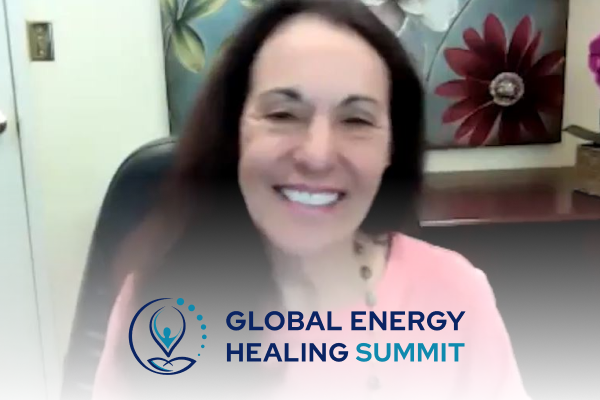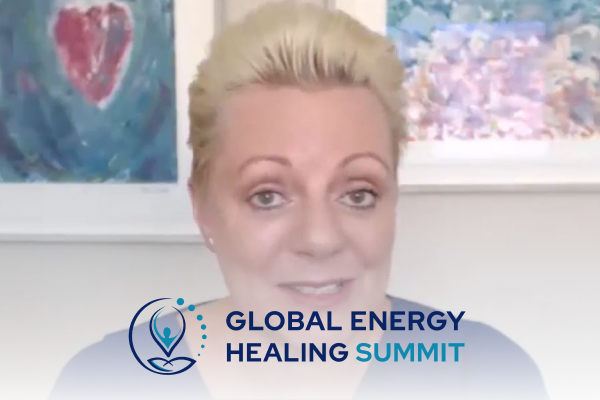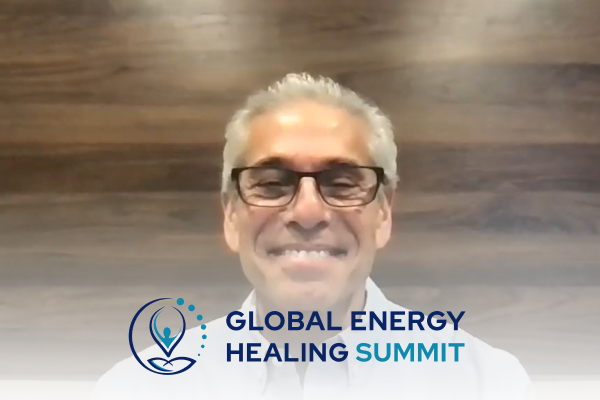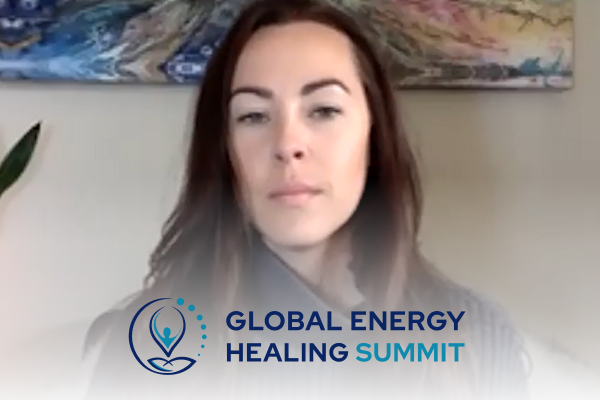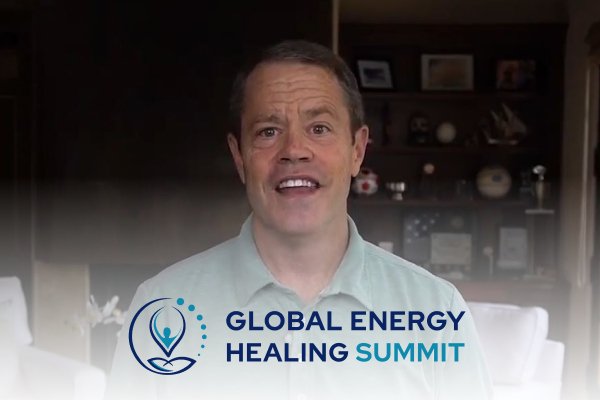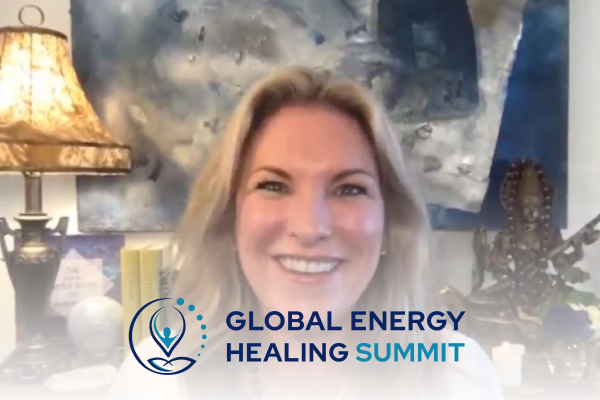Join the discussion below

Tom McCarthy is a husband, father, author, speaker, entrepreneur, and investor who has owned businesses in the training, software, financial services, and restaurant industries. Tom’s clients in his training business include some of the worlds leading companies such as Cisco Systems, Microsoft, Salesforce, Wells Fargo, and MetLife. His latest book,... Read More

Deborah Rozman, Ph.D., is a psychologist with over 40 years’ experience as a business executive, serial entrepreneur, educator, and author. She is President and co-CEO of HeartMath® Inc. with HeartMath founder, Doc Children. Deborah has penned a dozen books herself and co-authored with Doc Childre the Transforming book series, published... Read More
- HeartMath Institute has researched the heart’s energy with over 400 independent published studies of beneficial outcomes – learn about the exciting findings.
- What is the “energetic heart” and how does it facilitate healing?
- Learn and practice a HeartMath technique to access the energetic heart.
Tom McCarthy
I’m so excited to introduce our next guest. This is a person I think I met back in 2008 when I had just joined a group called the Transformational Leadership Council and was actually on a bus ride or a shuttle ride, let’s call it, from the airport with Debbie, my next guest, Deborah Rozman and got a chance to meet her there and then found out the depth of her work, which is truly amazing.
Debbie is by by trade a behavioral psychologist, PhD, but she’s more well-known as the president and co-CEO of an amazing company called HeartMath. And that’s what we’re gonna dig into today. HeartMath does amazing work all over the world showing people how to create more coherence with inside them so that they can be more responsive, more alive and have more joy and fun in their life. And it’s a technique that I’ve actually used that I learned through Debbie and her organization.
I use their products and they’ve got some really cool tracking mechanisms that you can use with your iPhone or your computer to see your level of heart coherence. So we’re gonna dig into that in just a minute. And then one other thing I just want to mention to you she’s also the author of a fairly recently released book called “Heart Intelligence: Connecting with the Intuitive Guidance of Your Heart”. So welcome Debbie, great to have you on board.
Deborah Rozman, PhD
Thank you, Tom. It is just so warm hearted to be with you here. Thank you for inviting me.
Tom McCarthy
Yeah, you bet. So hey, first of all, tell us what HeartMath means. A lot of people probably the first time they’re hearing it. What is HeartMath?
Deborah Rozman, PhD
Yeah, it sounds like an oxymoron, doesn’t it, heart and math, how do those fit together? Well, when we first started looking at how to research the connection between the heart, the brain, the nervous system, the ancient sayings from all cultures that wisdom is in the heart and your heart is the center of being, we want to understand how all these things connected, if there was physiological correlates.
And of course, that was just hard science. We found in the HeartMath Institute Research Laboratory, along with some other scientists to look at what was going on when we were feeling quality feelings of the heart, love, kindness, appreciation, compassion. And we noticed that what was happening in the electrophysiology of the heart and brain was really different than what was happening when you felt anxious or frustrated. So we developed a series of techniques to help people shift their electrophysiology. And obviously it was all, to take it out of the sweet sugary idea of heart, we called it HeartMath because it’s based on real mathematical principles and algorithms that we developed in our technology and to help people connect with their heart and align their heart and mind.
Tom McCarthy
Yeah, no that’s what I love about it. It’s real science. It’s not just theory or yeah, you feel good when your heart’s, when you’re feeling these emotions, you’ve actually looked in and your teams have looked in to the science of what’s really going on. And one of the key things that some people may have heard of, maybe not have heard of is, is HRV or heart rate variability, which is part of that discovery that your organization has led and now lots of people are talking about it. But for those who don’t know, and actually it’s kind of hard to understand for people that even practice some of the techniques, can you explain it to us in a way that we can understand what HRV, heart rate variability means?
Deborah Rozman, PhD
I will try. So when we were doing our research to see if we could find what the electrophysiological correlates were, we looked at the EKG, the electrocardiogram, when people are in different emotional states, we looked at brain waves, the electroencephalogram, we looked at galvanic skin response.
People may be familiar with these forms of biofeedback sensors. And we found a few things, but not a lot. And it wasn’t until someone suggest that we look at the beat to beat changes in heart rate, the intervals between heartbeats, that was the AHA, the golden moment. And that was measured by something called heart rate variability, the variability in your heart rate, beat to beat to beat to beat. Now most people think their heart rate is, like you take your pulse or doctor says 60 beats per minute or 70 beats per minute, that’s an average over a minute.
Tom McCarthy
And most people think that that’s what it always is. That’s what I used to think too, yeah exactly.
Deborah Rozman, PhD
It’s not a metronome like that. Your heart rate is actually changing with every single beat. It could be 40 beats, 60 beats, 15 beats, 80 beats, it averages out to that 60 beats a minute. And so if you begin to have a sensor that can measure the beat to beat the beat to beat, HRV or heart rate variability, was only being used back in 1990 when we started looking at this in fetal monitors for the health of the fetus’s heart. And we got one of those and began to look at it when people are in different emotional states. And we found that it was incredibly sensitive to your emotional state.
So when you were frustrated or angry or stressed or worried or impatient or irritable, all of those stressful feelings, the pattern of that heart rate variability got really chaotic, really jagged, irregular. And when you were feeling love or care. kindness or compassion or gratitude, any of those more soothing heartfelt qualities, the HRV pattern became very smooth and ordered, like rolling hills, up and down like a sin wave. And a sin wave in physics is called a coherent wave form. And sure enough, when the heart rhythm pattern was like that, it sent a different signal through the vagal nerve to the brain and your alpha brainwave entrained to it that same rhythm and it created coherence and synchronization in your brain all the way to the frontal lobes, the executive center.
That’s how we perform better, feel better, think better when we’re in a positive emotional state and when we’re loving what we’re doing and we’re putting our heart into what we’re doing. These were not just metaphors. We had found the electrophysiological correlate. So yes, heart rate variability has since then become analyzed by many researchers and two things they found that are important for everyone to know. One is what I just described, that the pattern over time, a minute or two minutes or three minutes, reflects your emotional state and you can with that heart rhythm biofeedback begin to feel and see and interact and learn how to shift really quickly into that coherent sin wave rhythm and that’ll help you feel better.
That’s one way, but the second way was also equally important and that it’s the amount of HRV, how high up and how down, how much it goes up and down because it’s age related. And when we’re an infant, we have the most up and down, most flexibility. And when we age, there’s a natural age related decline. But if you have less variability, up and down, before your age, it’s a predictor of health problems.
In fact, all cause mortality, from heart disease to immune problems. And one of the reasons that’s the case is what it’s measuring is the interaction between your parasympathetic and sympathetic nervous system. Sympathetic speeds up heart rate. Parasympathetic slows it down. The relaxation response is slowing down, more parasympathetic activity. But you need to be able to get up and jump up and run up a hill if you need to. And that’s why you want the flexibility to have a high heart rate, but the pattern can still be smooth if you’re emotionally smooth. Is that simple?
Tom McCarthy
Yeah, that narrow range, no, that was a perfect explanation, thank you. That was really, really well done and I hope everyone is starting to get a better understanding. So a narrow range of variability is a predictor of poor health and even mortality. What if somebody has a narrow range right now and maybe they’re in their ’50s or in their 60s? Can they improve their heart rate variability?
Deborah Rozman, PhD
Great question. Yes, they can. And what’s interesting is how the two measurements tie together because as you practice heart rhythm coherence, getting more into that sin wave, what we found in our studies is that starts to improve the range. You start to actually gain more of that vertical range. And the reason for that is that when you’re in that coherent wave form, your sympathetic and parasympathetic nervous systems are not just balanced, they actually entrain to each other, they enhance each other.
So in that enhancement, it increases the depth of the variability. So you actually, and you can do this in a fairly short period of time, improve that, and you’ll feel the difference. You feel it in less reactive, improved patience and self-regulation, ability to manage your emotions and just generally feeling better and doing much, much better because you’re moving into the body’s optimal state, which is that heart coherence, that positive emotional state.
Tom McCarthy
I love it. And stay tuned because Debbie’s gonna show you how to get in coherence a little bit down the road. So very cool. In a short period of time, people can improve their coherence and their HRV. Maybe they’re they’re on a path that is not leading them to health, but they can change that in a relatively short period of time. One of the things on your website, an amazing website, give us the website please.
Deborah Rozman, PhD
Yes, heartmath, h-e-a-r-t-m-a-t-h.com.
Tom McCarthy
Yeah and it’s got all sorts of resources. But one of the things that got my attention was that people are using your techniques for trauma, anxiety, sleeplessness, burnout, fatigue, all these maladies that people have, your technique can help them, get a better night’s sleep, recover from burnout, right, get more energy so you’re not fatigued. How does that work?
Deborah Rozman, PhD
Well, it can sound like a panacea for anything. And it’s really not that. It’s that we’ve done, we do a lot of assessments, pre and post, in companies and hospitals with health professionals, thousands of them from all over the world, schools for learning use this as well, because as you synchronize heart, brain and nervous system, you actually open up to a bigger picture thinking. And so much of our stress response as a society, as individuals, has become habituated. So when we’re constantly in a stressful state of anxiety or frustration or anger or just that low grade angst, we are actually fatiguing ourselves, draining energy, imbalancing our hormones, imbalancing our nervous system, that can lead to burnout.
If we have a traumatic experience and we don’t recover by rebalancing the nervous system, it can keep looping. So the underlining mechanism of all the things you talked about, can’t shut off your mind off and sleep at night, is that we need a reboot. And the reboot, just like with your computer, is learning how to reset your heart rate variability pattern, your autonomic nervous system, and using techniques when you start to feel stressed or irritated to shift back into a more coherent state so that your heart then opens up your higher brain centers to see new possibilities of how to handle the situation.
Otherwise, when you’re in that jagged heart rhythm pattern, it’s signaling the brain stress, and the brain goes into fight flight survival mode. So we’re living in this stress reaction until we know how to reboot or reset. And that’s really what HeartMath is specialized in is techniques to do that.
Tom McCarthy
I love it. And this is the Global Energy Healing Summit. So energy gets gobbled up when we are in that stress state. We have energy, but it gets gobbled up. And some people are constantly expending energy because they’re always stressed. I know you’re working with first responders and people through the past year that have had a lot of stress, but you’re helping them manage that stress and even re-energize themselves, right, so they can take on more stress. Is that correct?
Deborah Rozman, PhD
Yes, I’ll tell you a quick short story. Not only law enforcement, first responders, but where I am here in Boulder Creek, California, we had a serious fire right in the middle of the pandemic last August. It was called the CZU Fire. And it burned down a whole lot of our neighborhood and the big base in Redwood State Park and the local fire department is all volunteer. And so they really saved our buildings even though we had a lot of smoke damage and had the insurance replace a lot of things. But afterwards we talked to the fire chief and we realized most of those firemen volunteer weren’t paid.
They were just saving our area for 30, 40 days without any extra pay. And so we did a GoFundMe. We raised funds from the neighborhood to help support them and we were able to raise enough to give each $2,000. But then I said to the fire chief, “We would like to have one of our certified HeartMath trainers, who is a retired fire chief himself provide resilience training based upon the HRV research and the techniques we’ve used with the military and what we’ve used with other first responders to your team virtually.” And he was so appreciative. So we did that. There were actually two retired fire chiefs who were HeartMath certified workshop creators.
Tom McCarthy
That’s great.
Deborah Rozman, PhD
And I got a call, actually, this happened actually even this morning, and then this was like, five, six months ago, and they’re writing a book about the fire because it was amazing what happened. And they said, “Well, the chief told me to talk to you because of the resilience training. I guess you helped them raise some funds, but what he was most appreciative and what they’re using to this day is the techniques of HeartMath and the technology, to come back, to reset, to release the stress and build their resilience.” And I thought that was pretty cool.
Tom McCarthy
So powerful because think of them not, I mean the money was great, great job Deborah, thank you for doing that. The resilience training, that’s life-changing for these people. You know, you say they’re volunteers, when they go in stressful situations, they know how to get in coherence and be able to deal with it in a much more productive and probably creative way, but also the impact on their lives. There are probably people there that before they learned this technique had low coherence, didn’t have a high HRV, were heading for health problems. And everyone listening to this, just understand, right, we’ve already discussed this, if you don’t know how to get your heart in coherence and if you don’t have a relatively high HRV, there’s a likelihood you may have health problems.
You can change that though. That’s the great thing about this. It’s almost like we can change what we eat, we can change our coherence patterns in our heart, which is so beautiful. What are some of the illnesses that have been impacted by people being able to, and we’re not, you know, obviously there’s no guarantees of cures, but like I know I’m a very famous cardiologist that recommends your techniques to her patients because it’s helped with hypertension, it’s helped with heart disease. It’s been very, very useful to so many people. What are some things where you see it being applied? ‘Cause you say it’s being used in hospitals and by therapists, how are they using it with people?
Deborah Rozman, PhD
Well, in a variety of ways. Again, if you look at that, the technique is basically helping rebalance your inner operating system.
Tom McCarthy
Ah, good way of putting it.
Deborah Rozman, PhD
And that applies to anything just about, but the most common things are like hypertension, anxiety, depression. If they go to heartmath.com and scroll down the home page, you’ll see over almost 12,000 pre and post. You’ll see some of the stats, like 40% improvement in anxiety, 60% reduction in depression, 30% improvement in being able to sleep. It goes on and on in terms of those stats. And these were people who said they experienced these symptoms often to always.
Tom McCarthy
Wow.
Deborah Rozman, PhD
And so it’s a global effect because you’re getting right to the heart of the matter, no pun intended, and you’re learning to regulate your emotional response. The emotional feelings we have have more to do with our overall health and behaviors than we ever knew before. And most of us were never educated that we could shift emotional state, not repress it, not just vent it, but actually realign it, and that there are simple ways we can do that and that gives us access to new perceptions and a bigger picture. And that’s what we, the world definitely needs, is methods to do that because we all get stuck in our loops and belief systems and think that’s real and then we live in this survival stress modality, and it’s not the way we’re intended to live. And we don’t have to once we know something different.
So everything from burn patients to reduce pain, Walter Reed Army Hospital uses it to help get the vets off of opioids. I mean all sorts of use cases that you can learn about at our website, but it really is starting with the mental and emotional wellness and then getting the heart, brain, body in sync that allows the healing to happen more naturally and accelerate it.
Tom McCarthy
Yeah, no, I love that. Hey Debbie, can you talk a little bit more about the heart? ‘Cause a lot of people think the brain is what we think with and all the neurons are in the brain. Tell us a little bit more about the heart though, because I think it might be shocking for some people to learn what really is going on in the heart.
Deborah Rozman, PhD
Yeah, well, it’s interesting. When we first started researching the heart, it was like, okay, this is just blood pump. And we knew there was meditators that you would feel your sense of being there and we knew that there was a lot about the heart center and we knew that you wanted to be a heartfelt person, but when we really researched, it was amazing to find out that the heart is actually sending more information to the brain through the vagal nerve about how you feel and the body feels than the other way around. And the brain is actually like this incredible pattern matching computer.
It looks for what’s familiar and it looks for patterns. So it looks at the signals coming from the heart and the nervous system and it responds to that. And that creates memories and familiar response patterns. And so the heart signal to the brain is actually going through two pathways. One is to the amygdala, the emotional memory center, and one is to the thalamus that synchronizes or desynchronizes higher cortical function. Well you can just imagine that if you’re putting more coherence into both of those pathways, it’s gonna help to see bigger pictures, see alternatives and help with PTSD and traumas.
And the other thing we found, there’s actually four ways the heart communicates with the brain, is that the heart itself, and this was not our discovery, but we publicized it, it was hardly known, actually contains its own little nervous system, its own mini brain with neurons that can feel, sense, learn and remember. And it operates independent of our head brain. So what we’re connecting with there, what does this little brain do? And as we shift the HRV pattern, it activates that little brain in different ways. And that’s amazing. That helps explain how listen to your heart, look deep into your heart for the answer, your heart’s full of wisdom because this little brain is designed to modulate that type of perception and feeling. And when it works in alignment with the head brain, we get these downloads and inspirations. A lot of it originates or it’s picked up first by the heart. Maybe it’s coming from nonlinear sources or spirit or whatever you want to call it, but the heart’s receiving it and sending it to the brain. So it’s just amazing what we learned.
Tom McCarthy
Yeah, no I love that, I love that. One of the things that I work with people on is speaking and communicating. And when they get caught up in their head, trying to think through every little thing they’re gonna say, it’s not them. It’s not authentic. It’s not that good, right? They’re stumbling over themselves. But when they connect in here and just don’t worry about being perfect, but really trust that the heart will guide them, there is that connection and then brilliant thoughts just start to flow. It’s so amazing. Very cool. So hey listen, I know everyone’s waiting, like we built them up, like okay this is so good. How do I start to use some of it? Can you guide us through a simple little coherence technique that people can start using right away to take advantage of what you’re talking about?
Deborah Rozman, PhD
Absolutely. Now this technique was developed in the research lab. We have a lot of fancy equipment to see what would get people more quickly into heart rhythm coherence or HRV coherence, which is your heart rhythm. And we also have a technology that you can get that works with your smartphone and a sensor where you can see what it’s doing in real time.
Tom McCarthy
Yeah and let me just put in, I’m a big fan of your technology too. So I’ve got your technology. It’s really cool. You can see what’s going on and go deeper into your heart to get that nice rhythm when you need to and when it gets going, stay in that pattern. So I love the technology. And they can get that at heartmath.com.
Deborah Rozman, PhD
Absolutely. There’s the inner balance, which is wired technology or Bluetooth technology. It works with any smartpad or smartphone and then there’s the emWave2, that’s a handheld. It’s also connected to your computer so you can play games that are based on your coherence, train yourself that way with some cool visualizers and games.
And then there’s a health professional version that’s pro, emWave Pro that health professionals use. But this simple technique I’m gonna share with you is called quick coherence. And it will, if you use it, get you into that coherent rhythm. And then if you have any of the technology, you can see it and challenge yourself for different levels of coherence. So first step is focus your attention on the area of the heart. And you can put your hand on your heart to help you keep your attention there if you’d like. The heart’s really in the center of the chest. It’s just one level that goes out to the left.
Tom McCarthy
Yeah we think it’s way over here, it’s in the center.
Deborah Rozman, PhD
That’s right, that’s right.
Tom McCarthy
Now Debbie, should we all be doing this with you right now?
Deborah Rozman, PhD
Yeah, do it with me.
Tom McCarthy
Let’s do it. I’ll do it with you too, yeah.
Deborah Rozman, PhD
All right. Focus your attention on the area. Now you can do this with eyes closed or eyes open. And just pretend like your breath is flowing in and out of that area, the heart area or the center of the chest. Just breathe a little more slowly, a little more deeply than normal, but find an easy rhythm that’s comfortable. And you just do this for maybe five, 10 breaths or so. And that immediately will start to balance your parasympathetic and sympathetic nervous systems. But that’s only step one.
You don’t want to force anything. You just let the breath come and go in waves. And now step two is as you continue this heart-focused breathing, you want to activate a genuine feeling or attitude of appreciation for something or someone in your life. It could be a pet, a person, a time in nature, an accomplishment. Just feel that genuine appreciation or care or love for someone or something in your life, that positive feeling. And continue your heart-focused breathing. Doesn’t matter what you pick, a person or a pet, time in nature. It matters that you can evoke that experience, that feeling of love or care or appreciation. Actually any of the heart qualities will move your system into that coherent rhythm. But gratitude or appreciation are usually the easiest. And you just do that for another 10 breaths or so, feeling that appreciation. Okay now you can open your eyes.
Tom McCarthy
That felt great. That was awesome, yeah. I mean I’ve done this many times, but that felt good even just doing it again right now with you, with everyone watching us and hopefully everyone doing it too. That was really beautiful. Thank you, Debbie.
Deborah Rozman, PhD
It’s so simple and we all do it from time to time, but we think it just happens to us. We don’t realize this is something we can create, that we are empowered, that we can actually not only know the physiology of what’s going on, we can actually use the physiology to power up that mood shift and we can actually use that mood shift to sustain that heart coherent rhythm. And you do that before a meeting that you know could be contentious. You do that before you react and respond to an email that you later regret.
You do it after, if you do get triggered, to reset. And once you do this, there’s many other HeartMath techniques, but it’s sort of the baseline for connecting with your heart’s intuitive guidance. We have several techniques that help you do that. Or releasing old patterns in your amygdala, your emotional memory. And I do want to suggest to people, we are giving away The HeartMath Experience, which is a video-based training program with several of the techniques, including that one.
Tom McCarthy
Thank you so much. So they can all get that, yeah.
Deborah Rozman, PhD
All get that. Just go to heartmath.com. I’ll give you the exact URL for it. It’s HeartMath.com/experience. That was easy enough.
Tom McCarthy
Okay great, awesome.
Deborah Rozman, PhD
It will give you some of the science, some of the background, some of our mission to create a connection with the energetic heart and the spiritual heart and the physical heart and really help people move into what we call heart-based living, which is really what people need to better understand each other, have more compassion and empathy and connection.
Tom McCarthy
And we’ll talk about that in just a second too, but if we would’ve, if we would’ve been all hooked up to technology, we would have seen our HRV change, improve, during that little one or maybe two minutes, and we would have all become more resilient and healthier through that little one or two minute intervention, right?
Deborah Rozman, PhD
Exactly. And that’s really, we teach people, the hardest thing is remembering to do it. We teach people all over to use that to stop stress reactions or to prevent them. And that has a huge impact on their metabolic rhythms, on their sleeping rhythms, on how they respond to their families. Again, thank goodness, it’s something that simple, but you have to do it and repattern our habits.
Tom McCarthy
So it’s not enough just to know about it. You actually have to do it is what you’re saying, right? Okay good. So one more example, someone can’t get to sleep, same thing, they do that coherence, what we just did, the one step C breath coming in and out of your heart and then just attach to something? I always when you say attach gratitude or thankfulness or something you feel good about, I always think of my two children when they were little babies and they would lie on my chest. That’s always the image I have and it just immediately makes me happy and feeling great, but will that help us sleep better or fall asleep?
Deborah Rozman, PhD
It can for many people. There’s another step we add, and we always encourage people who really have insomnia problems to get one of the technologies. Usually it’s the handheld emWave2 because you don’t have to have your smartphone on and it just our red, green, blue, green when you’re in high coherence. You can use audio tones if you want. But once you’re in that coherent rhythm, what really helps is to radiate, meaning feel like the love or the appreciation is coming, radiating through the heart’s electromagnetic field.
Tom McCarthy
Out into the world?
Deborah Rozman, PhD
Out into the world. And as you continue to do that, you know, what I say to myself if I have some of those, I sleep really well, but I might have a night here or there where it’s harder to fall asleep or I wake up and can’t get back to sleep, I do that and I just say, “Okay well if I’m up all night, at least I’m doing something productive, radiating love and care to the planet, compassion to the people suffering. And at least that’s productive.” And usually I fall asleep within a few minutes. But again, you’re not up here rehashing or worried.
You are in your heart and you’re creating more of that synchronization in your body. We have a booklet called “The HeartMath Solution for Better Sleep.” You do need one of our technologies to use that because you’re changing your baseline coherence. And that’s needed if you really have sleep problems.
Tom McCarthy
Yeah well I love this technique because it does get us out of our head, which is where we spend so much time. And I know I’ve in the past tended to overthink things and that’s when I wouldn’t be able to go to sleep, I’m thinking about all these different things and it’s super stressful to be up here all the time. And coming down to here is just so refreshing and feels so amazing. And your technique that you’re sharing throughout the world, I know there’s hundreds of thousands, probably in the millions of people that are using this technique and getting really wonderful results.
Deborah Rozman, PhD
That’s true. I mean especially now, there’s so many changes happening in the world, so much unpredictability, so much craziness as people would say, and we call this there’s a global shift going on. And what we’re seeing is many, many more people, it’s bringing more people to their heart and saying wait a minute, I’ve just got brain fog, I can’t think clearly. It’s like the mind works best and it comes into its real genius when it is in alignment with our heart and we’re using both of those centers and unfolding our larger capacities. And I feel that’s what life is asking all of us to do now because the mind by itself has created this type of separation and chaos that we see around us and all the health problems. The heart is needed to inform the mind and for us to know and understand that we really are all connected and we really are all the same in the heart and being able to look after ourselves and each other.
So that’s what we mean by heart-based living. And it really does involve that type of self-management to keep shifting back to the heart, resetting there so that the heart, just like the blood pump, feeds the body, the heart’s electrical beat is what feeds the brain and the body. No heartbeat, nothing else, no brain, nothing.
Tom McCarthy
You’re not around anymore, yeah exactly.
Deborah Rozman, PhD
You’re not around anymore. But we’re all designed to be able to have this connection with our heart that can open up the higher brain potentials. And they don’t open up without that connection. And that’s the love, that is love.
Tom McCarthy
Yeah and so many people, myself included, they think that if I’m not thinking, I’m not doing anything. I’ve got to be thinking, thinking, thinking. But you’re thinking with your little puny conscious awareness part of your mind, right? You’ve got this whole unconscious, or I call it your super conscious, that I believe the heart is connected to that’s got so much more capability.
But what do we do? We wake up in the morning, we get our smartphone out, we look at the news, the emails, all the different things on there. If you’re wondering, when do I have time to do this coherence technique? Every time you’re looking at your phone, trust me, well not every time, there’s some times where it’s probably useful and good to do that, but so many times where you’re just, you’re on autopilot just trying to stimulate your brain, stimulate your brain.
Take a couple minutes off that and go do this coherence technique that Debbie just taught all of us. Debbie, I do want to talk about something you and I talked about, and we can kind of close with this, but you mentioned it already about when we are more coherent, we can help create more coherence in others, it actually stimulates coherence in others and better dialogue and communication and more embracing of diversity and world peace. Talk a little bit about that ’cause I know that’s really important to you.
Deborah Rozman, PhD
Yeah well after researching personal coherence and seeing what my heart rhythm pattern can show up in the brainwaves of somebody standing or sitting, not touching, just three feet away, and how we’re affecting each other as the heart beats, that pattern of how we feel is radiating out through the heart’s electromagnetic field. And the fact that we can sense it with magnetometers up to three to five feet away is amazing. So we’re affecting each other by our vibes, as the kids say. And this is the methodology, this is the physiology of it.
So when we’re angry and frustrated, we pick up each other’s anger and frustration, and that can create a snowball effect. And that type of wave of emotion affects each other. When we’re feeling uplifted and caring, that can also create that effect. So what do you want to create? We have a saying, “What are you feeding the field, the electromagnetic field?” And when we started to look at the potential for social coherence in schools, classrooms, work teams, sports teams, it was quite amazing to see how quickly we can get in sync with each other, or a couple or a parent and child. And it’s really exciting because it uplifts each other’s vibration, uplifts the spirit.
We did one study, or actually we didn’t do it, another researcher did, where he had 40 subjects and four at a card table, so 10 card tables, and he had them all hooked up. Three of them knew how to practice quick coherence. They could get into that coherent wave form. The fourth subject was off the street and didn’t know anything except he was part of an experiment. And what we found is that almost nine of the 10, when the other three got into heart rhythm coherence, the fourth person’s coherence increased-
Tom McCarthy
Without doing anything, just by being there?
Deborah Rozman, PhD
Just by being there.
Tom McCarthy
Yeah, wow.
Deborah Rozman, PhD
And of course, there’s always gonna be in life, some people who aren’t receptive. But the fact that there is this social coherence, they can improve listening and teamwork and connection, ’cause we are aligned in our hearts and minds listening, not agreeing necessarily, but present and listening and now that improves ball games, it improves sports, it improves everything.
And more, it sort of gets the ego out of the way without having to confront it ’cause we’re all just in connecting with who we really are. So then we started to research global coherence, meaning could we pick up changes in the Earth’s fields in the Earth’s planetary rhythms, like the Schumann resonance or the geomagnetic field and is that operating anywhere near the same as the coherent heart rhythm? And we found some exciting data on that. So nature’s natural resonant frequency for people and for animals and for the Earth itself is what’s called 0.1 Hertz, which is the frequency of that coherent heart rhythm.
Tom McCarthy
Nice that you taught us all how to generate. And I think it’s super important over the past year when we’ve all been in our houses together, and we had two of our grown, we have two children, they’re both grown now, but they were here in our homes during COVID. One has now since moved out up to Los Angeles. We have my 89 year old mother-in-law. Now fortunately we have a big enough home where we can all go to different parts, but there’s a lot of people that struggled because you’re home all the time with people and you get on each other’s nerves.
But what if you got into coherence? And what Debbie just said, when you go into coherence, not a guarantee that everyone is gonna go into coherence, but you can start to create a higher likelihood that your family is going to feel good, that your spouse, your partner, your children, and like Debbie said, you know, again, no guarantee, not everyone’s receptive, but hey, even if they’re not receptive, you get to know you’re gonna be better. You’re gonna be better by doing it and you can influence people around you. So this is really beautiful. What a great gift you gave us today. Thank you so much, Deborah.
Deborah Rozman, PhD
Well, you’re very welcome. I mean when I looked at this as a behavioral psychologist, I was like this was so exciting as far as a hope for the human race that people really can take charge of themselves and know how. We didn’t come here with an instruction manual. We’ve had to sort of figure it all out. And this really in my perception is the next level of human intelligence is how do we get the heart’s intelligence and the mind’s working together to become, we call it super human, but just a better human being.
Tom McCarthy
I love that. And that’s an amazing goal. That’s a big ambition. And you guys are making it happen though. And again, the beautiful thing, this is not just theory. Oh, wouldn’t it be wonderful if we all felt better and we were more in our hearts? You prove it through science, through experiments, through really seeing it work and putting statistics to it. And I even love the name of your company, HeartMath or heart science almost right? It’s the heart, the touchy feely thing we always felt good about our heart, but then making it scientific and applying math to it and showing how when we improve that math that the heart is creating, we feel better, we change the field around us and we live longer, right, we’re less susceptible to disease. So amazing, amazing work. Thank you so much for all the work you and HeartMath have done. And any final words for everyone listening?
Deborah Rozman, PhD
Thank you, Tom. I appreciate the opportunity to share this and I really hope everybody listening practices that simple technique I taught you. It can seem too simple, but if you do it genuinely, you will feel a shift every time. And I do encourage you to look at heartmath.com and order that .com/experience ’cause it’s free. We decided to give it away a year ago when COVID happened and it’s 10 minute, nine 10 minute segments, interactive, gives you something to practice after each one and you’ll have a good feeling for HeartMath and then what you might want to do next. And of course, if you can get the technology because that’ll really engage you when you see what’s happening in your heart. And when you get frustrated, you see what it does, it’s very motivating.
Tom McCarthy
Yeah, absolutely. Deborah, great job. Thank you so much. Everybody, please go to the HeartMath site, get those videos, those courses that Debbie offered you and also practice what you just learned. I mean the true value is not now that you know how to go into coherence, but do it. Like you did it for a couple of minutes a day, do it again later today and then try it again tomorrow and then maybe get a rate regular rhythm and your life will change. So Debbie, thank you for helping change lives.
Deborah Rozman, PhD
Well thank you. And it does become automatic after all ’cause you’re repatterning your neurocircuitry. But thank you so much Tom, appreciate being here.
Tom McCarthy
Yeah thanks Debbie and look forward to seeing you again soon.
Deborah Rozman, PhD
Okay, take care.
Downloads

